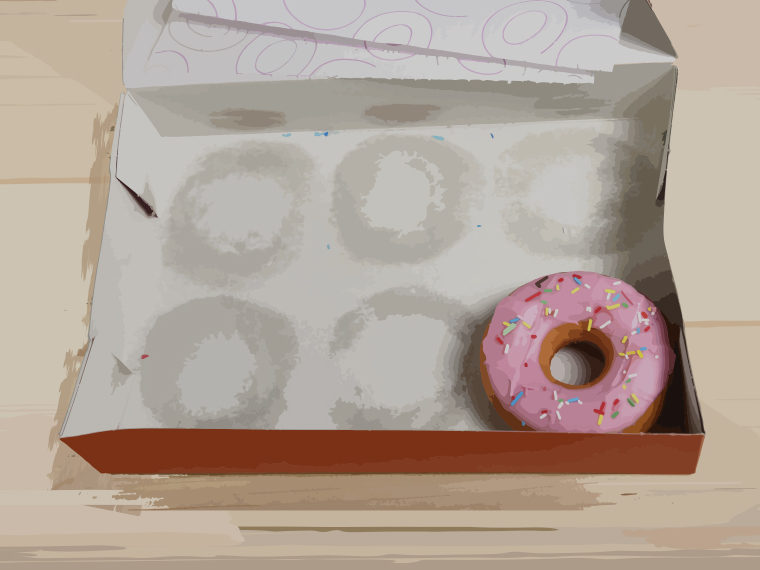Ad agencies’ 15% fee lasted 100 years longer than it might have
Certain industries seem to have perfected the art of extracting their pound of flesh. If you sell your home, most likely you’ll hand over 5% of the sale price to real estate agents. Literary agents grab a hefty 15% of a book deal’s payout. And for over a century, advertising agencies collected a 15% commission on media billings, even after they switched from selling ad space for publishers to buying ad space on behalf of advertisers.
How did they pull that off? It is well known from repeated antitrust lawsuits that the ad agencies colluded with publishers to keep their billing-based compensation after switching sides to work for advertisers. But why did they switch sides if they apparently liked the old compensation structure better? Why didn’t they just keep working for the publishers? And how did their collusive arrangement eventually disintegrate?
A working paper by Hebrew University’s Sharon Horsky and UCLA Anderson’s Robert Zeithammer models how the ad agency industry evolved over time, explains why the switch coincided with the rise of national brands and documents that the collusive arrangement disintegrated not after antitrust rulings, nor after the rise of new media types, but only when new types of specialized agencies emerged in the 1990s.
The Evolution of Commission and Compensation Structures
Why should a buyer’s agent receive a commission on the money spent by the client? Such a compensation structure seems to work against the interests of clients, who are presumably interested in getting a good deal (e.g., an effective advertising campaign) and not just in spending more money. Given this conflict of interest inherent in the billings-based compensation of ad agencies, the authors suggest that ad agencies were able to maintain their commission structure not only by essentially colluding with publishers to ensure that they could continue to siphon off 15% of an advertiser’s media spend but also while simultaneously erecting barriers to entry into the agency industry.
To explain why the agencies first switched sides and then demanded they be able to keep their old compensation structure, the authors create a model with a simplified set of principal-agent relationships that evolve over time as the industry changes. In the earliest period, between the 1840s and the 1880s, advertising agents worked for newspaper publishers, seeking out local businesses to buy ad space in the paper. They were paid a 15% commission based on how much ad space they sold — a standard arrangement used to motivate salespeople in most industries.
For the next century, between the 1880s and the 1980s, advertising agencies worked on behalf of firms that needed to advertise, buying media space on their behalf — yet they still got paid 15% commission based on how much they bought.
The model helps explain these shifts as follows: Picture a nation with two large cities — Chicago and New York, for example — each with a hometown paper and a local readership. In the earliest days of advertising, publishers in each city hire agents to persuade local firms to buy ad space, alerting readers to their goods and services for sale. Key to this model’s evolution over time, the authors write, is “the accumulation of seasoned advertisers.” Once a firm begins advertising regularly with the publisher, the publisher can easily retain that firm without the agent’s help; the publisher has only to look at the newspaper to figure out who the seasoned local advertisers are. At the same time, as the agent continues to recruit new advertisers, the agent builds up a substantial rolodex of local firms.
National Advertisers Shift the Industry Model
Now here’s the twist that eventually makes the industry shift: Not all of the advertisers will remain local. Some of these firms have the potential to become national, but, in the model, only the agent knows which ones have national potential. The agent also has the capacity to help them achieve this potential — by bringing their advertisements to another market.
The publisher is aware of his agent’s ever-expanding list of advertisers with national potential. So, for example, the Chicago publisher, aware that his agent’s growing rolodex gives her an increasingly lucrative option to bring her Chicago advertising contacts to New York, will pay her more and more to continue working exclusively for the Chicago newspaper. But at a certain point, the publishers balk at the rising compensation demands from their agents, and it becomes more profitable to bank on their seasoned advertisers and just allow the agents to take some of the advertisers national, the authors write. In other words, it’s cheaper for the Chicago publisher to rely on ad revenue from his seasoned Chicago advertisers and allow the agent to head to New York with a bursting rolodex full of Chicago firms.
Thus, the model explains why the rise of national brands around the 1880s (for example, Ivory soap, Heinz Ketchup or Miller beer) coincided with the switch from ad agents acting as local representatives of newspapers to working on behalf of national companies seeking new markets across the country for the firms’ goods and services. But after the switch, these national advertisers were obviously quite seasoned and did not want to pay the agents for mere referrals to newspapers in which they were already advertising. It turns out that during the relevant period, the ad industry evolved in another important dimension. Large advertisers began asking their advertising agencies for services beyond simply finding them space in the right newspaper. They wanted creative input — good copy, images, logos.
The Full-Service Ad Agency Is Born
Thus was born the modern full-service ad agency (of the kind depicted in “Mad Men”), “an outfit that performs both creative production and media buying.” Creativity, then, becomes another key factor in the model: It enhances the per-dollar effectiveness of advertising, a dynamic the authors term “creativity lift.”
In the model, enriched with creativity, national firms hold pitch contests and select the agency with the more creative idea, paying the difference in added creativity lift to the winning agency. This competition did spur more creativity. The authors note, “The contests were not actually used to set the price competitively as our models assumed.” Instead, they write, “the agencies successfully colluded to demand 15% of media billings as the prize of winning the creative-pitch contests.”
They were able to do this via trade practices that were collectively called the “recognition system,” in which the publisher’s association recognized a set of agencies that met the association’s standards, according to the paper. This limited new market entrants, diminishing competition. Ad agencies deployed yet another tactic that allowed the 15% commission to endure: placing the advertisements themselves and describing the 15% as a “discount” on the total media budget. For example, when the Pabst Brewery hired an agency to spend $100,000 hawking beer nationally, the agency spent $85,000 on ads, then furnished Pabst with media invoices totaling $100,000, including a “$15,000 ‘discount’ pocketed by the agency,” the authors note.
Why did the agencies have to go through all this trouble to merely keep their old compensation scheme from their time as salespeople of newspaper space? Why couldn’t they just go back to working for the publishers? The model explains the irreversibility of the switch as follows: Once the Chicago agent has brought her high-potential Chicago firms to a New York publisher and sold ad space on behalf of the New York publisher under the old commission model, the agent’s rolodex is, effectively, “sold,” and the Chicago publisher is unlikely to hire the agent back at the lucrative rate once commanded. The agent is better off working for national advertisers who demand creativity, but the national market for creativity is competitive thanks to agents from other cities, and so it might not pay much. Hence, the model shows why the old compensation is simultaneously more attractive and no longer available.
Advertisers smelled a rat as early as the 1920s and mounted repeated challenges to these arrangements, eventually winning a 1956 consent decree under antitrust law. But the 15% media commissions nevertheless persisted until the 1980s, because compensation amounts and structures were considered proprietary, making collusion difficult to prove and inhibiting industrywide transparency around advertising rates. It wasn’t until the agency industry itself evolved, with the emergence of new fee-based services such as consumer research, marketing and public relations that agencies began to shift away from the 15% commission fee.

New Market Players Disrupt the Advertising Landscape
The paper links the eventual demise of the fixed 15% commission on media billings to the emergence of new market players that offered specialized services in either design (the task of “creative boutiques”) or ad placement (done by media buyers). Their appearance in the industry served to unbundle the two main tasks of a traditional full-service advertising agency and made the 15% arrangement “untenable” as a compensation structure, since a creative agency can no longer even see or verify what the media budget is if that spending is handled by a media buyer.
Thus, creative work is now usually sold for a labor-based fee and no longer as a percentage of a media spend. To link this unbundling to the demise of the collusive recognition system, the authors use triennial survey data from the Association of National Advertisers that clearly shows a jump from 18% of advertisers unbundling their advertising services in 1991 to 47% doing so by 1994. Immediately after this jump, the percentage of agencies being compensated based on billings dropped precipitously from 61% in 1994 to 10% by 2003. Not only did most advertisers thus switch to paying their agencies on a fee basis, but the surveys also reveal that those who continued to pay based on media billings rapidly abandoned the fixed 15% rate around the same time as the unbundling accelerated. “Unbundling was thus just the straw that broke the commission camel’s back after more than a decade of advertiser pressure to reduce the commission rate,” the authors conclude.
Featured Faculty
-
Robert Zeithammer
Professor of Marketing
About the Research
Horsky, S., Zeithammer, R. (2021). The Rise and Fall of the 15%: Evolution of Advertising Agency Compensation.






